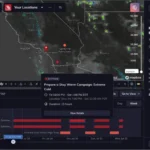What is a High Reliability Organization?
High-reliability organizations, usually shortened to HROs, are organizations that operate in complex, high-risk environments where a failure or mistake can have severe consequences, yet they manage to maintain high levels of safety and reliability. They accomplish this through a focus on continuous learning, organizational resilience, anticipation of errors, and effective response to crises.
These types of organizations are typically within the following industries:
- Healthcare
- Manufacturing
- Aerospace & Aviation
These industries succeed in avoiding high-impact events despite their high-risk environments.
Key Characteristics of HROs
What high-reliability organizations all share is a list of five principles that outline their ability to maintain safety and reliability.
- Preoccupation with Failure: Constant awareness of the potential for errors and continuous examination of processes to detect and correct small problems before they escalate.
- Reluctance to Simplify Interpretations: Avoiding oversimplification of operations and issues, understanding the complexity of the systems in which they operate.
- Sensitivity to Operations: Maintaining situational awareness, paying attention to front-line operations, and responding promptly to emerging problems or changing conditions.
- Commitment to Resilience: Developing the capability to adapt, recover, and respond to unexpected events.
- Deference to Expertise: Valuing and utilizing the knowledge and expertise of individuals, regardless of rank, based on the situation’s needs
Examples of High-Reliability Organizations
Healthcare Organizations
The nature of the tasks carried out in healthcare institutions calls for precision and leaves little room for mistakes. From the ER to the pediatric unit, healthcare organizations maintain their reliability to the public.
- Patron Safety: Healthcare organizations must have good situational awareness with early warning systems in place to keep patrons safe from external harm
Manufacturing Organizations
Manufacturing companies have a place under the HRO umbrella, with several automotive manufacturers considering themselves high-reliability organizations.
All employees within this car manufacturing giant play active roles in recognizing opportunities for improvements and subsequently implementing those changes – demonstrating high reliability theory on a large-scale operation.
- Operational Efficiency: Manufacturing organizations maintain well-oiled machines in their daily operations, reiterating on processes and improving protocols safety
Aerospace Industry
When airplanes and space come to mind, there’s an inherent expectation of uncompromising safety, both for the employees and the customers entrusting them with their journeys.
Major airlines maintain high reliability within their air traffic control processes and ground operations. Businesses in the aerospace industry follow strict protocols for manufacturing processes and keep their people safe with strategic planning with plans to combat errors for extended periods of time.
How Can We Enhance HROs?
HROs maintain their high reliability by efficiently problem-solving and constantly improving their processes. Despite their ability to achieve high reliability, there’s one thing these organizations aren’t immune to: increasingly severe and volatile weather.
Enhancing High-Reliability Organizations (HROs) involves developing strategies and implementing technologies to optimize their operations, reduce errors, and improve response capabilities for risk mitigation against external risk factors. Here are three strategies that can be used to enhance HROs:
Implementing Advanced Technologies:
Utilizing state-of-the-art technologies like AI, automation, and data analytics can enable HROs to process information more efficiently, identify potential risks early, and make better-informed decisions.
Fostering a Culture of Continuous Improvement:
Cultivating an environment where employees are encouraged to learn, adapt, and improve can help in the identification and resolution of issues before they escalate. This includes continuous training and learning opportunities and fostering open communication and feedback loops within the organization.
Enhancing Situational Awareness:
Improving the capability to recognize, understand, and comprehend the critical elements of information about what is happening to the team with regards to the mission can lead to better decision-making in high-pressure and high-risk situations.
Bonus: Using Weather Intelligence to Do All of the Above
Weather intelligence can be a pivotal enhancement for HROs. By providing real-time, accurate, and hyper-local weather data, weather intelligence tools can significantly improve situational awareness and operational decision-making.
- Risk Mitigation: Advanced weather intelligence allows HROs to anticipate and respond to weather-related risks proactively, ensuring the safety of personnel and assets and reducing the likelihood of weather-related incidents.
- Operational Efficiency: Accurate weather predictions enable organizations to optimize operations, scheduling, and resource allocation, reducing unnecessary costs and delays.
- Strategic Planning: Weather intelligence allows for better strategic planning by providing insights into weather patterns and their potential impact on operations, enabling organizations to prepare and adapt to changing conditions effectively.
By leveraging weather intelligence within aviation, manufacturing, and healthcare, organizations can use weather forecasts to drive better outcomes for their employees and patrons.
Check out our blog to learn more about the power of AI-powered weather intelligence for high-reliability organizations.







